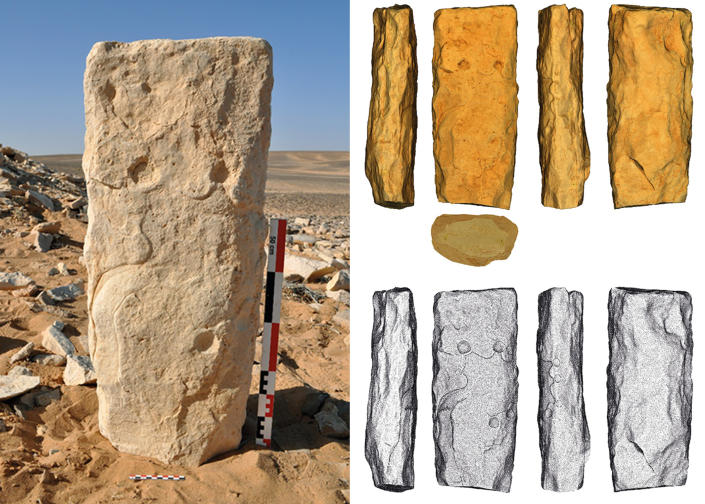Desert monoliths reveal oldest blueprints for human-made megastructures

Views (202)

If your understanding of Stone Age humans is one of primitive cave people bashing rocks together, then perhaps it’s time to think again.
If your understanding of Stone Age humans is one of primitive cave people bashing rocks together, then perhaps it’s time to think again.
Our ancient ancestors were able to build huge Neolithic structures based on detailed plans engraved in stone, that show levels of skill not previously seen this early in human evolution, a new study has found.
The research centers on two monoliths around 7,000 and 9,000 years old, one from Jordan and one from Saudi Arabia. Both were discovered in 2015 by Rémy Crassard, an archaeologist at the French National Center for Scientific Research, and his team.
That team has since studied more than 6,000 desert kites and the findings could change society’s understanding of early humans and their relationship with the land.
“The extreme precision of these engravings is remarkable, representing gigantic neighboring Neolithic stone structures, the whole design of which is impossible to grasp without seeing it from the air or without being their architect,” the study said.
“They reveal a widely underestimated mental mastery of space perception, hitherto never observed at this level of accuracy in such an early context.”
The traps are a series of walls and stones that are placed measuring from hundreds of feet to 3 miles. The megastructures converge inward to pits about 13 feet deep where animals could be trapped.
The kites are so vast that they were only spotted from the air in the 1920s and later picked up by satellite imagery.
The research team believes they were built across the Middle East and Central Asia, often far from human settlements, suggesting a sophisticated hunting strategy perhaps based not just on finding meat, but also materials for tools and clothes, such as horns, hair and hide.
The engraving plans could have helped not just in the building of vast animal traps, but also in the planning of hunts, the study said.
The kites are so vast they can’t be seen or surveyed from the ground without GPS technology.
But no one truly knows how prehistoric people who hadn’t mastered making pottery managed to do it.
“It would therefore seem that kite-building hunters knew how to use a surveying technique, still unknown to us, involving notions of measurement and even calculation,” the researchers said.
“This tends to call into question the idea that a complex literate society is a necessary condition for map-making,” they added.
0 Likes
